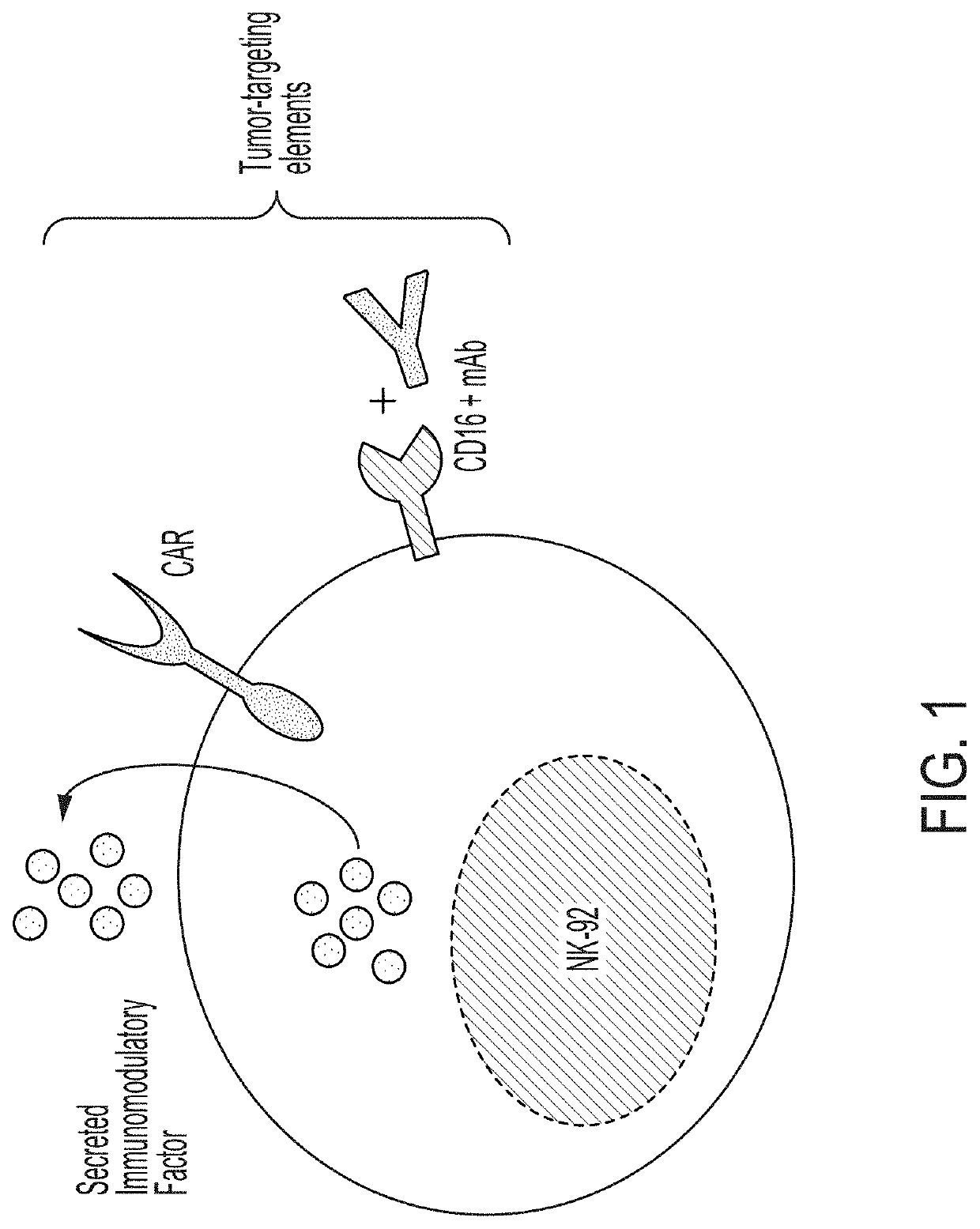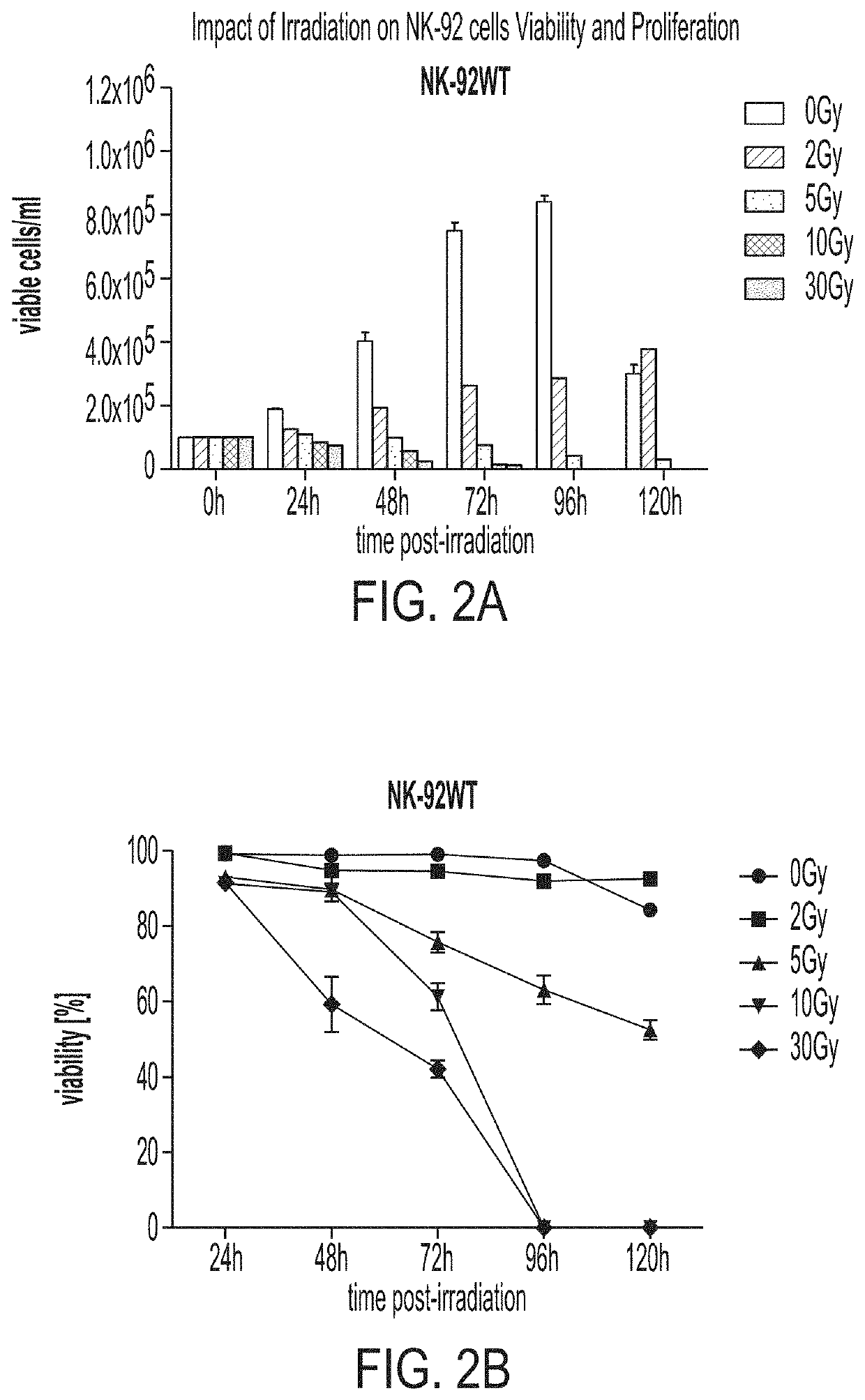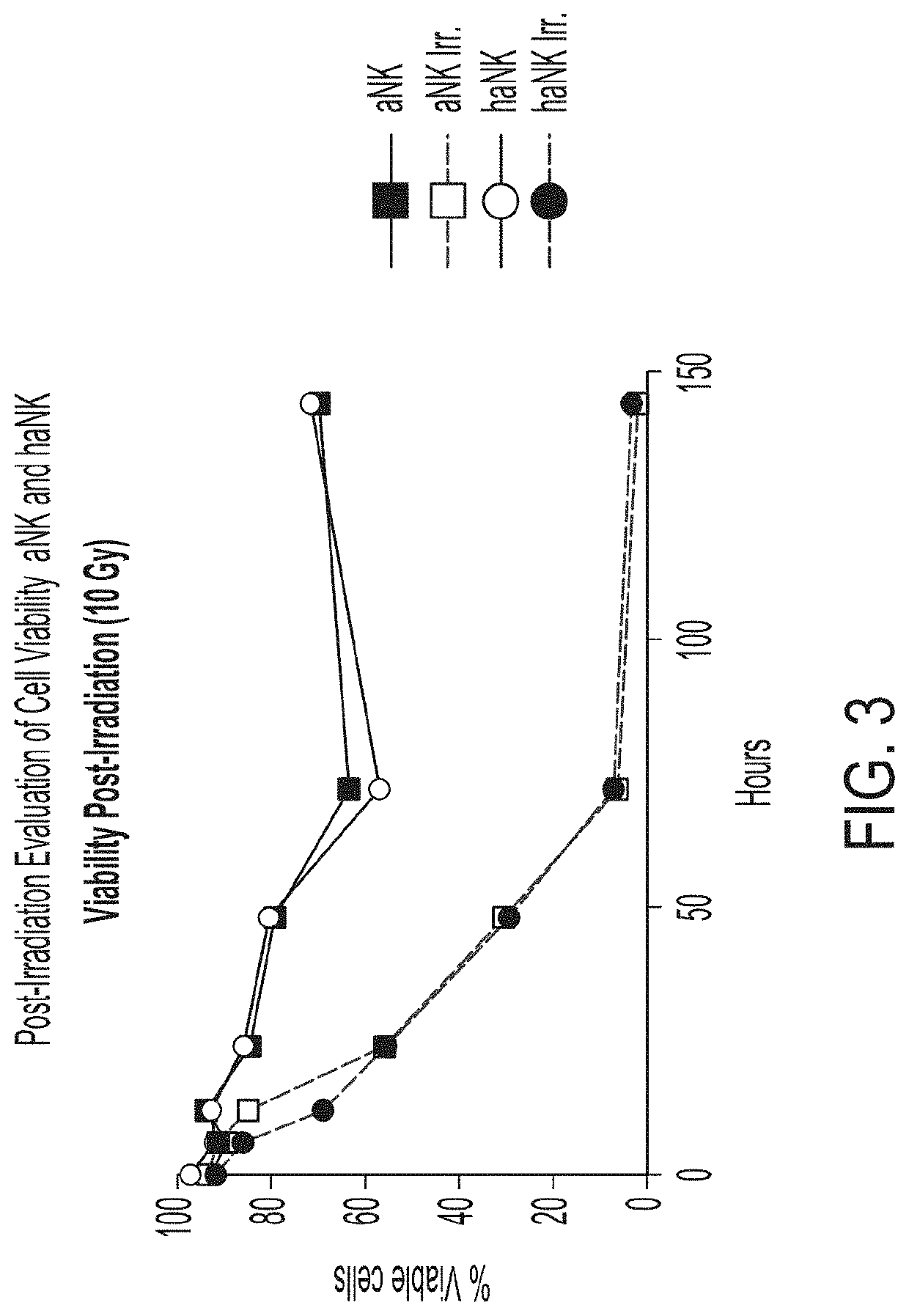Cell-mediated transient delivery of immune-enhancing molecules into the tumor microenvironment
a cell-mediated and tumor-associated technology, applied in the direction of antibody medical ingredients, genetically modified cells, drug compositions, etc., can solve the problems of complex cell engineering, long exposure, and mechanism that cannot kill 100% of cells reliably, and achieve the effect of limiting adverse effects
- Summary
- Abstract
- Description
- Claims
- Application Information
AI Technical Summary
Benefits of technology
Problems solved by technology
Method used
Image
Examples
examples
[0100]With reference to FIGS. 2A-2B, wild type NK-92 cells were irradiated with radiation doses ranging from 0 to 30 Gy and the cell concentration and percent viability were measured accordingly over 5 days (120 hours). Cell concentration and percent viability in irradiated (10 Gy) and non-irradiated aNK and haNK cells are shown in FIG. 3.
[0101]The PD-L1 t-haNK cell line has been developed for administration to cancer patients with tumors that express the PD-L1 antigen and may also be used in combination regimens with antibodies that recognize tumor-specific antigens. A PD-L1 t-haNK cell line secreting a TGFβ antagonist (TGFbeta-trap / PD-L1 t-haNK) by transfection with a quadricistronic vector is schematically depicted in FIG. 4A was developed for blocking TGFbeta activity in the tumor. However, allogeneic cells can induce harmful effects when infused in cancer patients. Accordingly, to avoid these deleterious effects the TGFbeta-trap / PD-L1 t-haNK cells were irradiated prior to infus...
PUM
| Property | Measurement | Unit |
|---|---|---|
| time | aaaaa | aaaaa |
| radiation energy | aaaaa | aaaaa |
| affinity | aaaaa | aaaaa |
Abstract
Description
Claims
Application Information
 Login to View More
Login to View More - R&D
- Intellectual Property
- Life Sciences
- Materials
- Tech Scout
- Unparalleled Data Quality
- Higher Quality Content
- 60% Fewer Hallucinations
Browse by: Latest US Patents, China's latest patents, Technical Efficacy Thesaurus, Application Domain, Technology Topic, Popular Technical Reports.
© 2025 PatSnap. All rights reserved.Legal|Privacy policy|Modern Slavery Act Transparency Statement|Sitemap|About US| Contact US: help@patsnap.com



